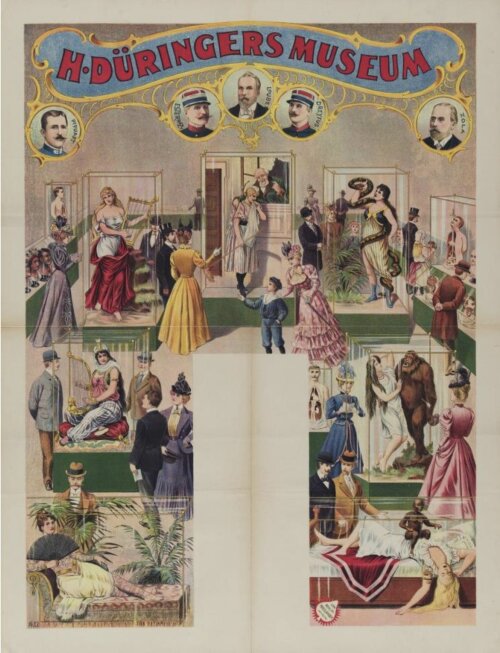Postdoc: Bart G. Moens
This subproject will study how showpeople appropriated images from around the world and in what ways they contributed to a growing visual literacy amongst ordinary people across the social spectrum. Travelling entertainment ‘opened up’ the world to a distinctively broad population regarding the gradual globalisation of capitalism, imperial routes and new means of transportation, and the consequent unprecedented mobility of artists, materials and knowledge. Popular attractions such as panoramas, dioramas, cosmoramas, cycloramas, magic lantern shows and wax museums introduced people to pictures of faraway times and places, as well as international heroes both contemporary and historical. History and modernity often mixed in these spectacles, which featured historical monuments, legendary battles, and illustrated travel stories. While these displays were meant to exoticise and entice, they also familiarised audiences with certain tropes related to the world’s history and present, captured in particular visual strategies and supported by carefully scripted viewing experiences. Wax sculpture cabinets, for example, showed historical or contemporary scenes with a certain documentary character. During a guided tour, visitors were introduced to cultural, political and religious history and popular images from all over the world. Cyclorama shows combined a 360° display of a panorama with a diorama, aspiring for a more immersive experience. This subproject examines the interplay of fact and narrative, documentary image and its contextual presentation in the outlined fairground attractions, which promised the audience a peek into the wider world.
How did showpeople appropriate and frame historical knowledge and popular images from all over the world in their entertainment and did they contribute to a growing visual literacy of their audiences?

Düringers Museum, 1897. Poster by Adolph Friedländer, Theater collection UvA (Allard Pierson)